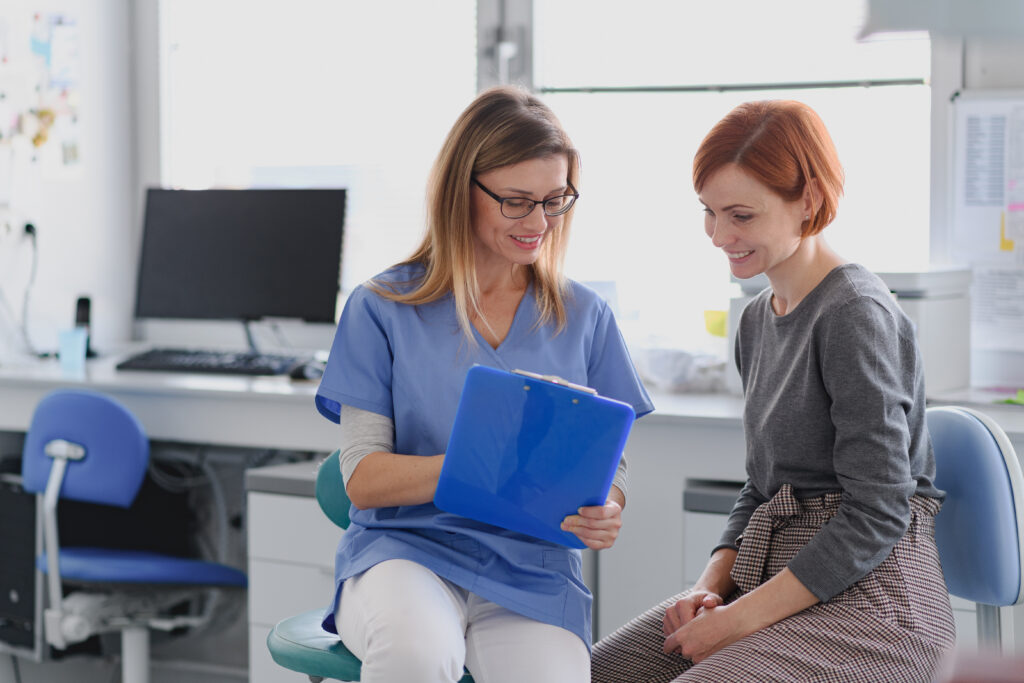Co-producing better information about a rehabilitation unit
How did the journey start?
The Royal Cornwall Hospitals NHS Trust were keen to work in collaboration with their patients to drive quality improvements and recognised that the Always Events® approach aligned with this view. It was agreed that a neurological rehabilitation unit, Marie Therese House, would be an ideal service in which to conduct the trust’s first Always Event; the staff were known to be very engaged and the patients typically had a longer length of stay (weeks rather than days) for rehabilitation meaning participation could be maintained across the project.
A point of care team – known as the Action Team or ‘A-team’ – was set up which included a mix of staff, student learners and patients who volunteered to join. There was a core group that attended most meetings with other patients or staff members joining at different points in the journey.
What mattered most to patients?
A baseline survey showed that patients were very positive about their experiences of care in the unit. When considering what would make their care outstanding, the main suggestions were:
- Improved information about the unit – what does Marie Therese House do?
- Meeting the needs of long-stay patients, such as social activities
- An understanding for patients on their recovery and achievements
- Improved communication about moving on from the unit
- Being better at managing the expectation of patients and family members on admission to the unit
The A-team voted to focus their Always Event on improving the communication to patients and their families about the unit. Patients highlighted that if they had been given some practical information about the unit before their admission (such as mealtimes, what was in the rooms and visiting times), it would have allayed their fears and made them feel less anxious. This was particularly the case as the unit was a very different environment to an acute hospital.
I will always have access to up-to-date information about Marie Therese House Rehab Unit prior to or on admission.
Vision Statement
Implementing change
To improve patients and their families understanding of the rehabilitation unit, the A-team decided to create a patient handbook to include information recognised by patients and their families as being important.
The team designed a survey to understand what information patients and their families were currently given about the unit and what they would have liked to have known before being admitted. Feedback from the survey showed that there was not currently a welcome leaflet or handbook for patients or visitors; induction information varied and there were some suggestions as to what they would have liked to have known prior to or on arrival.
All the elements of the handbook were coproduced by patients and staff in the A-team, including working with a professional photographer to take the photos, the choice of photographs to be taken, and the handbook layout and design. The A-team met regularly to discuss and agree on the content, with both staff and patients having actions from the meetings.
The handbook was trialled in November 2018. A paper survey, which was co-produced by the team, was given to staff, patients, and families to establish how effective the handbook was and what improvements were required. Overall, the handbook was well received; some small changes were made following the feedback.
Main challenge to implementation
The biggest challenge the A-team faced with implementing their Always Event was getting their patient handbook approved for publication. The handbook, having been developed by the patients and staff, did not adhere to the corporate criteria for publication. It was important to the A-team that the final product was their work presenting their unit in ways that were meaningful to them and not presented through a corporate lens. The A-team enlisted the support of the executive sponsors for the Always Event to help overcome this barrier by highlighting the need for a different approach to be taken to fulfil the key principle of Always Events that changes are made in collaboration ‘with’ patients and not ‘for’ patients.
What helped with co-production?
- Good facilitation skills: staff recognised the need for them to ‘step back’ and coach their patients to develop the changes rather than coming up with the solutions themselves.
- Engaging patients in all stages of the process. Both patients and staff had actions following the A-team meetings.
- Keeping everyone updated on progress via newsletters which outlined what had been achieved so far and next steps to maintain momentum.
- Patients recognised their participation in the Always Event was valuable to their rehabilitation.
Impacts
To ensure the Always Event’s aim statement was achieved, patients being transferred from the local acute hospital are given the handbook by hospital staff before being admitted to the unit. It was recognised that some patients are referred from hospitals outside the region, so the patient handbook is also included in the welcome pack provided to patients on admission to the unit.
The team achieved their Always Event aim statement as all patients are clerked in on admission when they are given the handbook; it has been embedded in the initial welcome and clerking process. The consultant checks access to the handbook on first contact with the patient.
In addition to the benefit for all patients having information about the unit, there was also an unintentional positive impact on those patients that coproduced the Always Event. Some patients used their involvement in the Always Event as part of their rehabilitation as it gave them something to focus on. The team recognised the improvement in some patients’ recovery during the Always Event.
Key learnings
- Executive-level support was important for successful implementation. The support was key to staff having time to work on the Always Event and for overcoming the barriers encountered to producing the patient handbook.
- Utilising their existing Patient Experience Group as the oversight team for the Always Event meant that it was a standing item on their agenda which helped maintain momentum and visibility.
- Team structure: having a patient experience lead and a designated clinical lead attend the NHSE&I training was seen as beneficial to implementing the Always Event.
- Staff and patients volunteered to be part of the A-team. This was seen as important for ensuring they owned it which helped maintain
- their engagement.
- The clinical lead had experience in using quality improvement tools which was helpful to the implementation of the Always Event methodology.
- Staff engagement with the Always Event was seen as important to its success. The lead nurse in the unit was supportive, and membership of the A-team was open to all staff working in the unit regardless of their role.
Next steps
The team are continuing to evaluate the success of the patient handbook and have discussed having an electronic version that can be remotely sent to patients and/or relatives. Staff involved in the Always Event recognised the value of partnering with patients and are keen to promote the use of this approach for other quality improvement work. It is recognised that having one member of staff trained in the approach is not sufficient to drive the programme forward and are working to incorporate the methodology into their quality improvement strategy.

